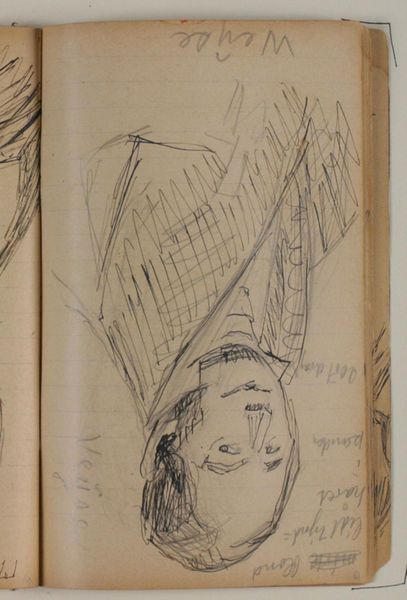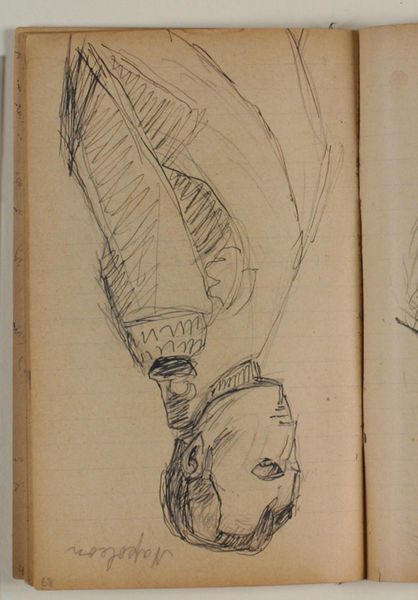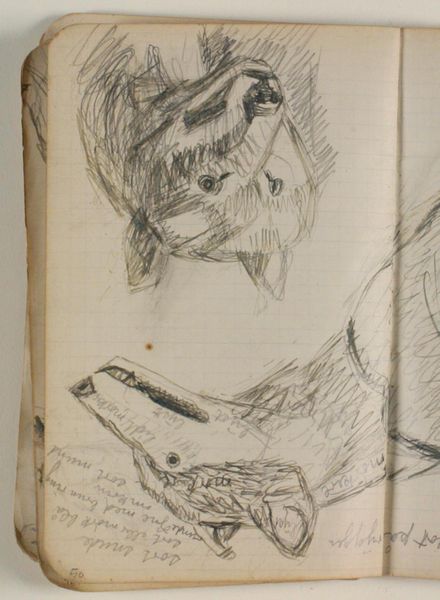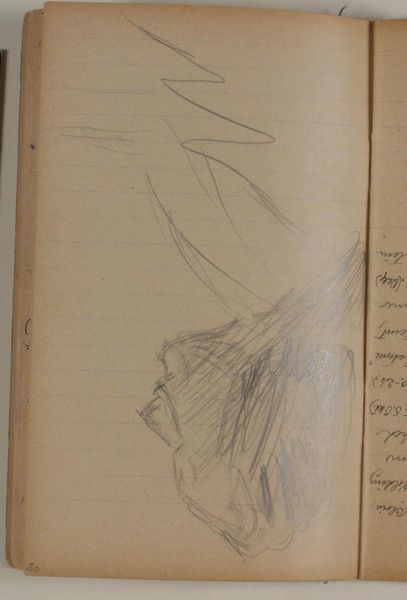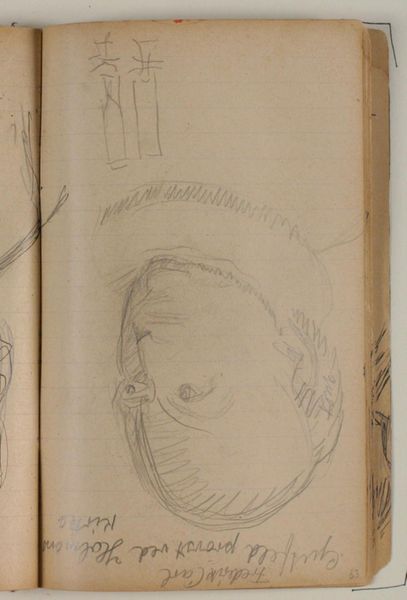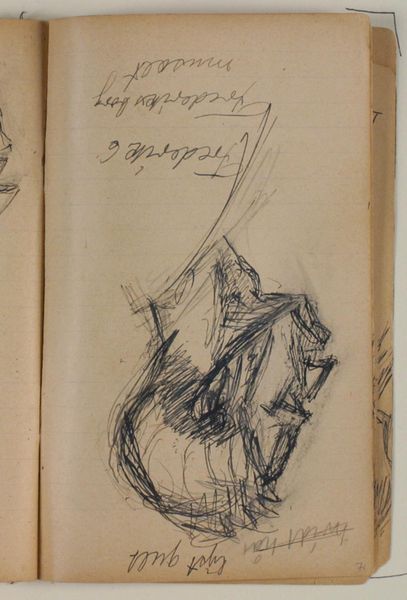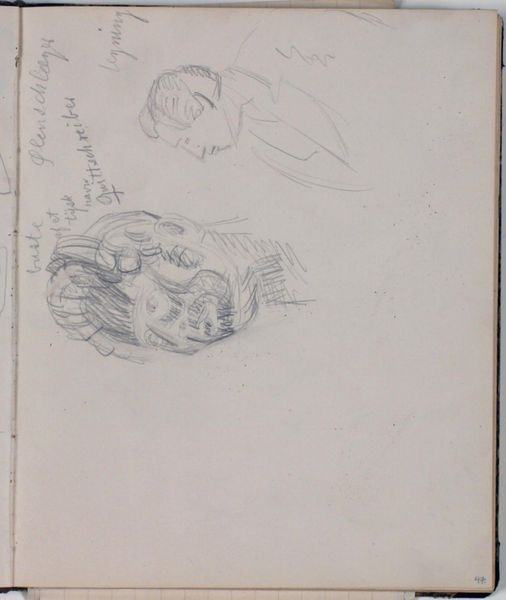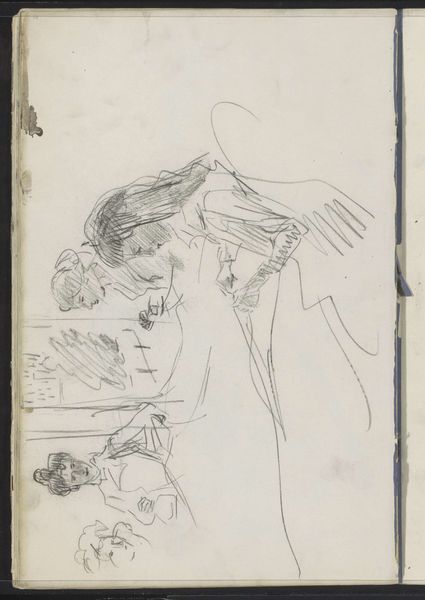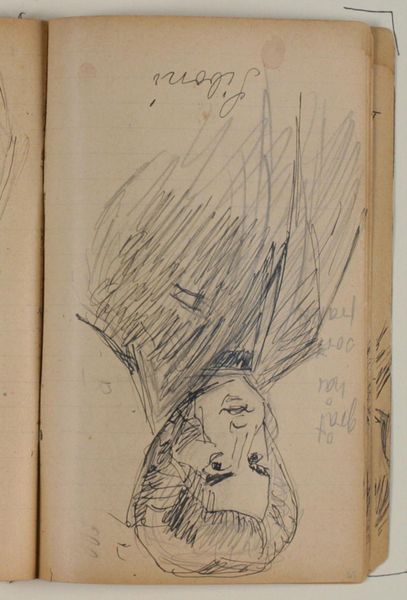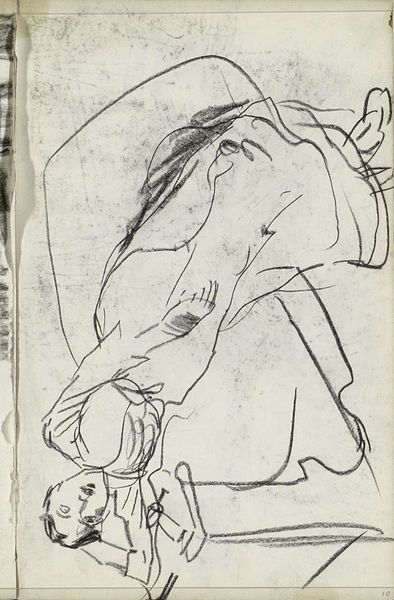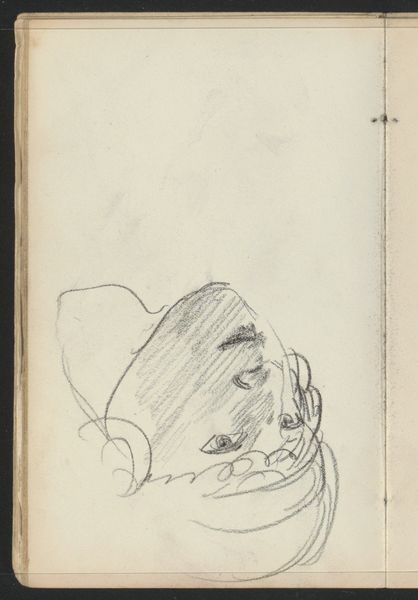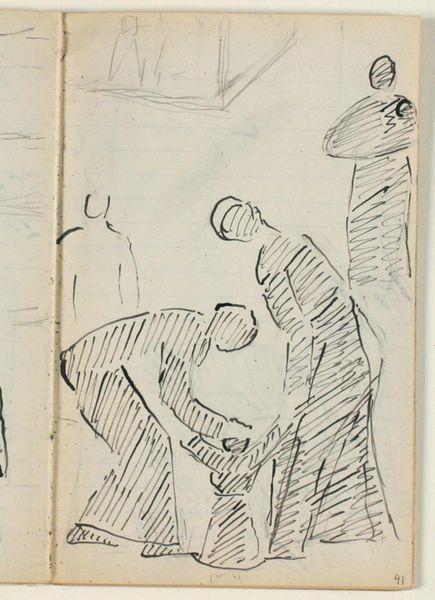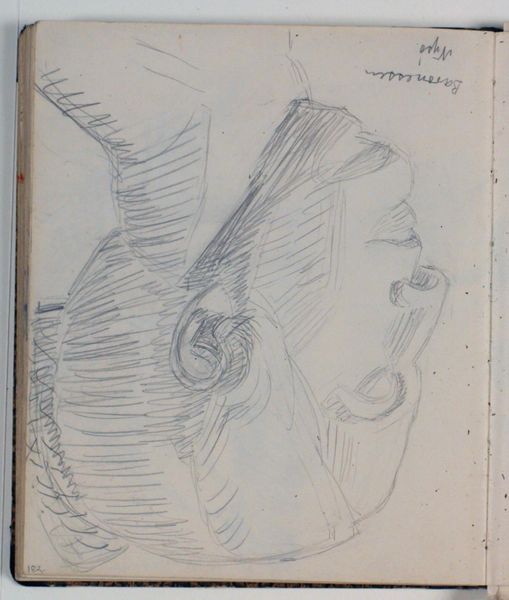
Studie af B.S. Ingemann efter portrætbuste på Frederiksborg 1930 - 1938
0:00
0:00
drawing, graphite
#
portrait
#
drawing
#
graphite
#
academic-art
Curator: Today, we are observing Niels Larsen Stevns' "Studie af B.S. Ingemann efter portrætbuste på Frederiksborg," a graphite drawing created between 1930 and 1938. Editor: The energy jumps out! You see the rapidly sketched lines and shading, giving the portrait a raw, almost anxious quality. It feels immediate. Curator: Precisely! Notice the economy of line. Stevns captures the essence of the subject with remarkable efficiency, conveying form and volume through hatched marks and tonal gradations. The visible texture of the paper support contributes significantly to this effect, no? Editor: Absolutely. Look closely, and you see that this study comes directly from observations of a sculptural bust of Ingemann. It makes you think about the process. Was he capturing an existing artwork or an idealized likeness already mediated by a sculptor’s hand? How does that shift labor and value here? Curator: A compelling observation! One could argue that Stevns engages in a dialogue across media and time, reinterpreting the sculpted form through the language of drawing. Editor: It strikes me that academic exercises like this also show Stevns grappling with artistic conventions around historical representation, which probably impacted his decisions concerning material use. The availability, cost, and prestige associated with graphite sketches surely played a role in the visual outcome of the artwork. Curator: A perspective rooted in materiality enhances the artwork through understanding historical context and the tangible relationship between the artwork and artist. Editor: Definitely, recognizing artistic choices made by the artist enriches this study far beyond just Ingemann's portraiture. Curator: It certainly adds another fascinating layer of interpretation to Stevns’ art. Thank you for your unique outlook!
Comments
No comments
Be the first to comment and join the conversation on the ultimate creative platform.
